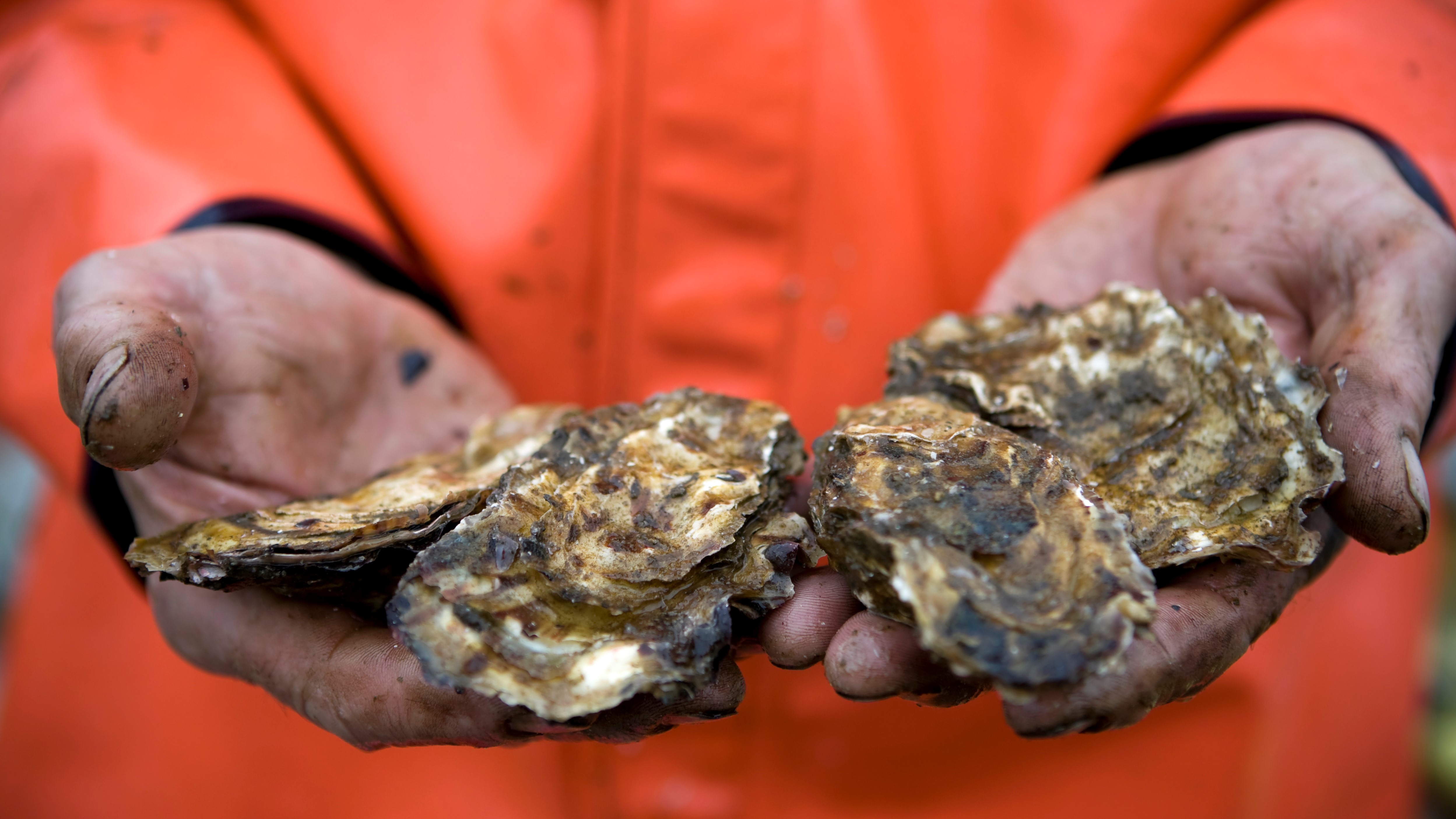Ocean modelling combats deadly oyster virus
16 August 2021
Few people outside the oyster industry have heard of Pacific Oyster Mortality Syndrome (POMS). Unfortunately, for Australian oyster farmers, the virus is a serious challenge. Outbreaks can cause millions of dollars of damage to oyster stocks. So, what is the virus and how does ocean modelling help protect the oyster farming industry?
The POMS virus was first discovered in Europe, but it has spread around the world. In 2010, POMS was detected in Australia in Sydney's Georges River. Since then, it has spread to NSW, Tasmania and South Australia.
The virus is highly infectious and causes mass mortality in Pacific oysters within days. Commercial juvenile Pacific oysters, or spat, are particularly at risk. Since the virus only targets the Pacific oyster, other bivalves including Sydney rock oysters, mussels, scallops, pearl oysters and the native angasi oyster are not at risk.

Image: An oyster farmer with four Pacific oysters.
Modelling how the virus spreads.
Over the past decade, we have been working with the South Australian Research and Development Institute (SARDI), the research division of the Department of Primary Industries and Regions (PIRSA) on different projects. A recent project, funded by the Fisheries Research and Development Corporation, was designed to help understand the spread of the POMS virus and safeguard the $40 million per year South Australian oyster industry.
While the POMS virus only survives for 1–2 days outside its host oyster, viral particles move around with ocean currents. Understanding those currents gives valuable insight into how the virus could spread.
Our ocean modelling team leader Frank Colberg said the team used a regional ocean model, that covers parts of the Great Australian Bight, to understand more about the movement of the virus.
'Our 10-year ocean model reanalysis gives an overview of relevant ocean properties, such as currents and temperatures. We use model simulations that imitate the spread of the virus. We examine how far the particles are able to spread depending on tides and wind.' said Frank.
'We run the model several times to see what will happen to the spread of the virus in different situations and locations. We then provide this data to PIRSA who use it to understand the likelihood of the disease being transported to commercial oyster sites across different regions and seasons,' said Frank.

Image: Commercial oyster farming areas in SA where POMS particles are tracked. Credit: SARDI
Working together helps the oyster industry.
PIRSA have provided this information to industry and worked with them to update the South Australian disease response plan for POMS. The research also identified feral oyster populations around the state that are at risk of contracting the disease and spreading it to commercial farms. Industry now has an active program to knock down those feral Pacific oyster populations regularly to reduce the disease risks.
The modelling for POMS has made a substantial difference to the oyster industry. Policy-makers also benefit in their emergency preparedness and disease prevention measures. The modelling could be further developed for the benefit of other fishing and aquaculture sectors.
More information
- BOM Webinar - National Science Week: Using weather & climate science to help aquaculture industries
- Marine and Ocean Forecasts



Comment. Tell us what you think of this article.
Share. Tell others.